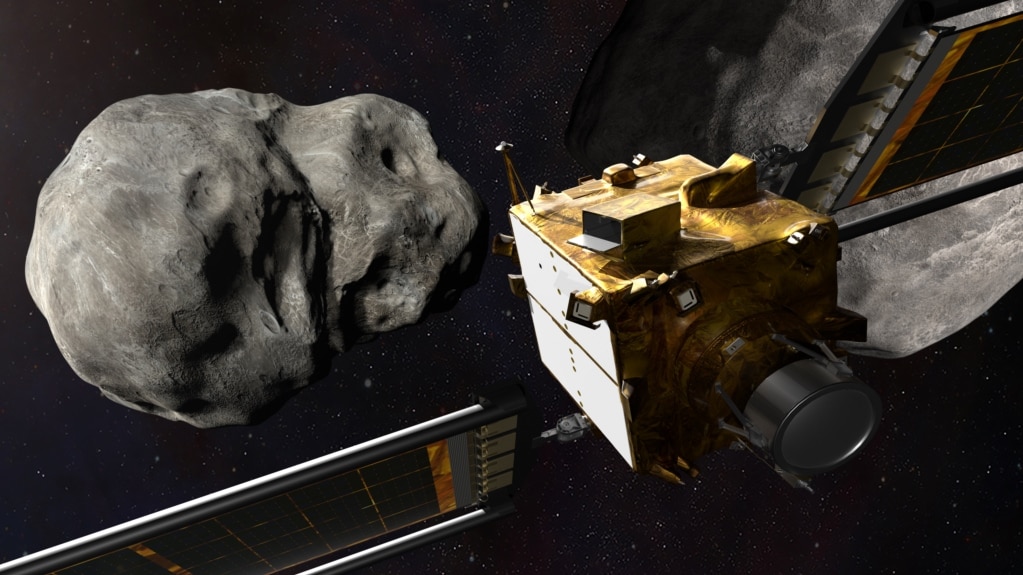A new study suggests that an asteroid strike by an American spacecraft likely changed the shape of the targeted object.
NASA crashed the DART spacecraft into the asteroid Dimorphos in 2022. The asteroid strike happened about 11 million kilometers from Earth.
The experiment tested a method for changing the orbit of some asteroids to prevent them from possibly crashing into our planet in the future.
NASA has said its studies of the crash showed it was successful because the force of the strike changed the asteroid’s orbit around a larger asteroid Didymos. NASA’s measurements also found the strike reduced the orbital period of Dimorphos by 33 minutes.
Such a major crash would normally create a large crater in the targeted object. But a new study presents evidence that the crash made more than a hole – it likely changed the shape of the whole asteroid.
Astronomers at the University of Bern, in Switzerland carried out the research. A study detailing the findings recently appeared in the publication Nature Astronomy.
The team used a computer simulation system to study the changes to Dimorphos that resulted from the crash. The system aimed to recreate the breakup of space objects that have been hit.
The researchers said their simulation method has been used in the past to recreate space objects crashing into each other. For example, the team said it confirmed the results of a Japanese spacecraft collecting a sample from the Ryugu asteroid in 2019.
Sabina Raducan is with the Physics Institute of the University of Bern. She helped lead the project. Raducan described the simulation process in a statement as “computationally intensive.” In total, she said 250 simulations were completed, which reproduced the first two hours after the asteroid strike.
The researchers used all available information about NASA’s operation. These included the predicted shape of Dimorphos, data on the strike itself, as well as the size of the cloud the crash left behind. In addition, the team aimed to estimate unknown details about the asteroid and the surrounding area.
“Then what we did is check which of the simulation run outcomes most closely match observed reality,” Raducan said.
She added that results of the research provided clear evidence that the crash turned Dimorphos into a relatively weak “rubble pile” asteroid. Raducan explained this meant that the object is currently being held together “by the asteroid’s extremely weak gravity” rather than a solid and strong mass.
The researchers noted that the results of the simulation and the team’s examinations partly explain why the crash was so effective in changing the path of the asteroid.
Raducan said the results also persuaded the team that “the likelihood is that the crater grew to encompass the entire body itself, so that Dimorphos ended up being completely reshaped.” It is therefore unlikely that a crater still exists after the crash.
The researchers said the existence of a crater can be investigated further by a European Space Agency (ESA) spacecraft. The spacecraft, called Hera, is preparing for a possible launch in October.
ESA says Hera’s cameras and instruments will carry out detailed studies of Dimorphos and the asteroid it orbits, Didymos. During the operation, the spacecraft will aim to collect the most data yet on such an asteroid system.
I’m Bryan Lynn.

